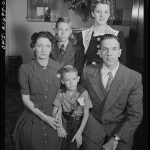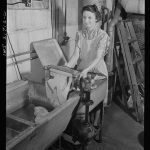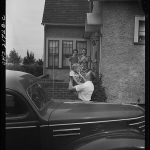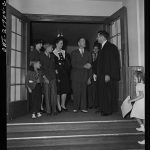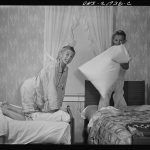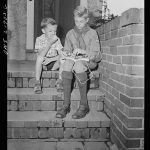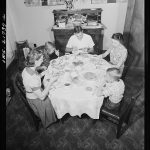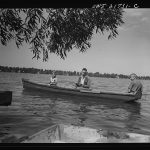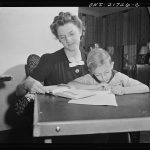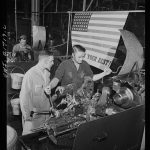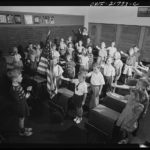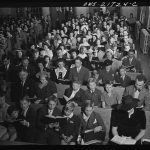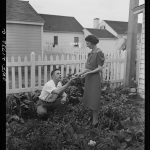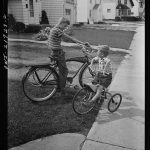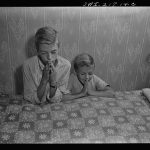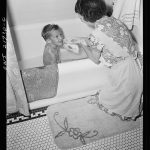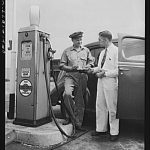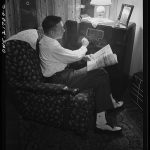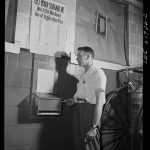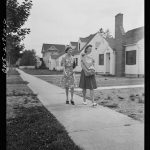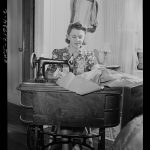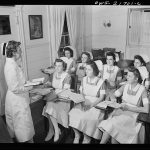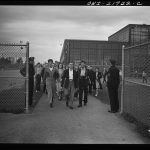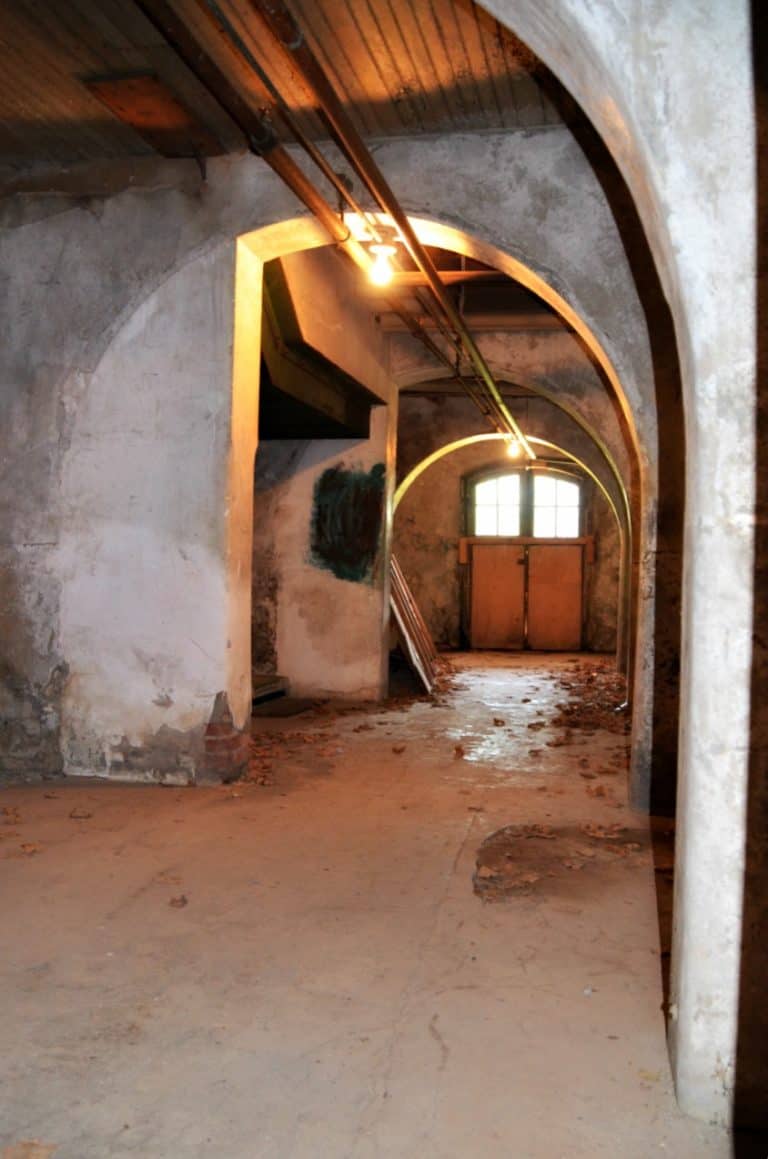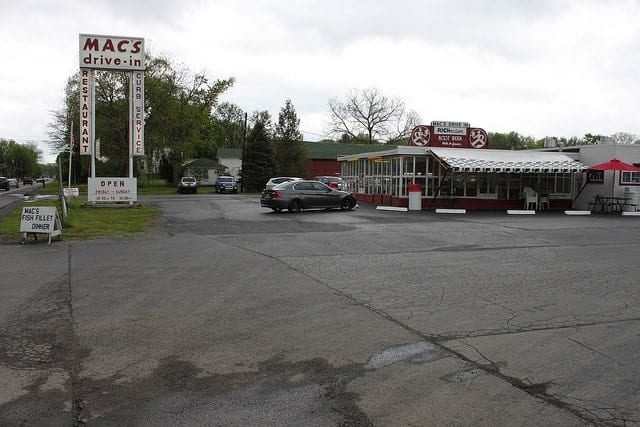The Babcock Family: Life on the WWII Homefront in Rochester, NY
While looking for something completely different on the Library of Congress website I happened to run across a collection of photos titled Rochester, New York. The Babcock’s , a typical American war worker’s family. The photos look like they were created to be used as American propaganda during WWII, and offer an interesting look back that I thought would be fun to share here.
American Propaganda during World War II
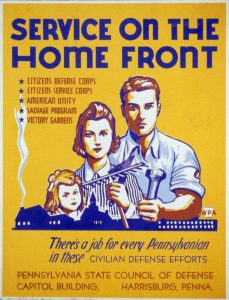
On the heels of the Great Depression, many US citizens believed that their country should focus on rebuilding and strengthening the economy, following the recent economic crisis rather than fight a distant war. After the Japanese attack on Pearl Harbor, most were convinced to support the war. However, Roosevelt created the O.W.I. (Office of War Information) in 1942 to boost wartime production at home and lift morale within the weary nation.
OWI photographers documented many different aspects of homefront life and culture, but common themes among US propaganda included the promotion of war bonds, efficiency in factories, hard work, self-sufficiency, conservation of resources, and maintaining civilian morale.
The Babcock’s
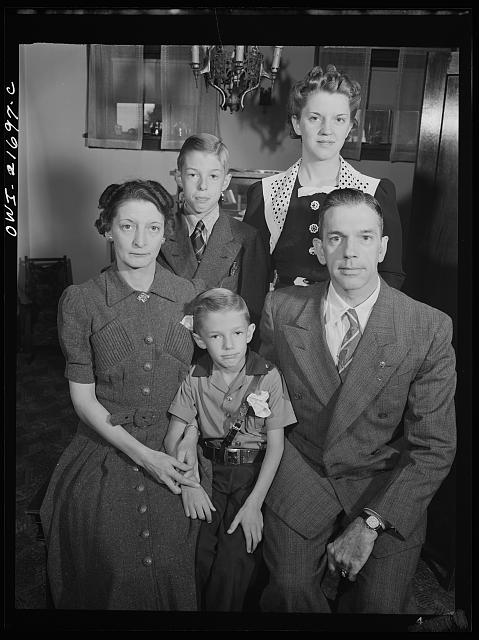
I am not sure why, but my immediate reaction to this collection of photos was that this was a fictional family and the images were all staged for propaganda purposes. While it could just be a huge coincidence, a quick search on Ancestry.com seemed to confirm that the Babcock’s were indeed an average all-American Family on the homefront in Upstate NY, who were either recruited or volunteered to support the war effort by allowing a photographer to capture images of a day in the life of a typical American war worker’s family.
According to the 1940’s US Census, a Babcock Family resided in the town of Ilion, in Herkimer County. The family members included Howard (age 40), Mary (age 38), Shirley (age 18), Howard Jr. (age 10) and Earl (age 4).

“One front and one battle where everyone in the United States—every man, woman, and child—is in action. The front is right here at home, in our daily lives.”
~ Franklin D. Roosevelt
The Photographer
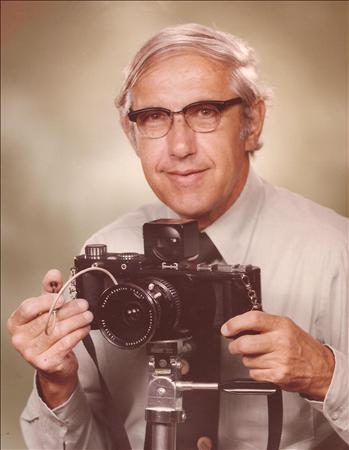
The 38 prints that make up the Babcock collection were taken by Ralph Amdursky, a local photographer, who had a very impressive photography career.
Mr. Amdursky was born in 1913 and grew up on Avenue E, in the heart of Rochester. In 1933, he graduated from Benjamin Franklin High School. After graduation, Ralph enrolled at Syracuse University and later transferred to Rochester Institute of Technology, where he studied photography. He started his career in 1935 with the Rochester Democrat & Chronicle/Times Union. There he distinguished himself through the use of natural light photography, a practice that was rare at the time. Ralph soon began photographing for “Life”, “Look”, and “Parade” magazines. During World War II, he joined The Office of War Information (OWI), photographing for “Victory” magazine. It would be interesting to know if the Babcock Collection was ever published in Victory Magazine!
After the war, Ralph was employed for 32 years at Eastman Kodak as a photographer, during which time he produced 22 of the Kodak Coloramas which hung in Grand Central Station in New York City. Ralph’s trademark photos were large aerial views, usually taken from a helicopter.
During his career, he photographed five U. S. Presidents, entertainers, and dignitaries he was also an Honorary U. S. Navy Blue Angel.
Source Information:
All photos credit: Ralph Amdursky, Source Collection: Farm Security Administration – Office of War Information Photograph Collection (Library of Congress)
Census information: Ancestry.com. 1940 United States Federal Census [database on-line]. Provo, UT, USA: Ancestry.com Operations, Inc., 2012. Original data: United States of America, Bureau of the Census. Sixteenth Census of the United States, 1940. Washington, D.C.: National Archives and Records Administration, 1940. T627, 4,643 rolls.
Ralph Amdursky:
Photo credit: https://www.legacy.com/obituaries/democratandchronicle/obituary.aspx?pid=166872993#sthash.eopRocgY.dpuf

